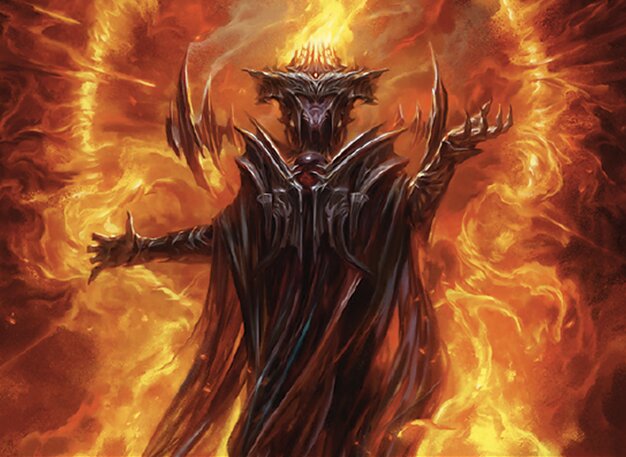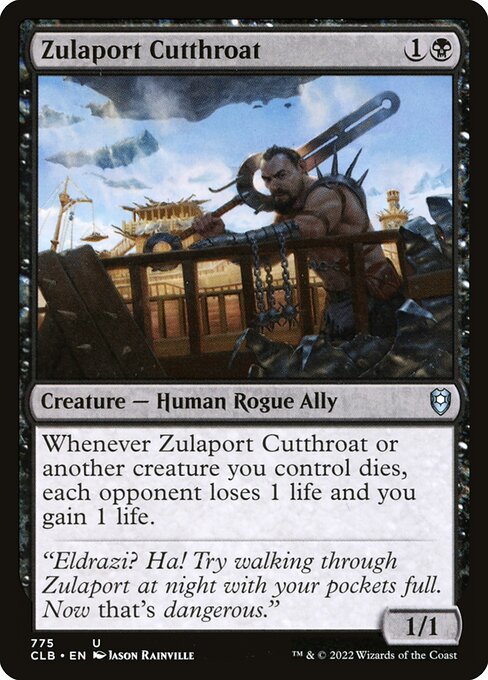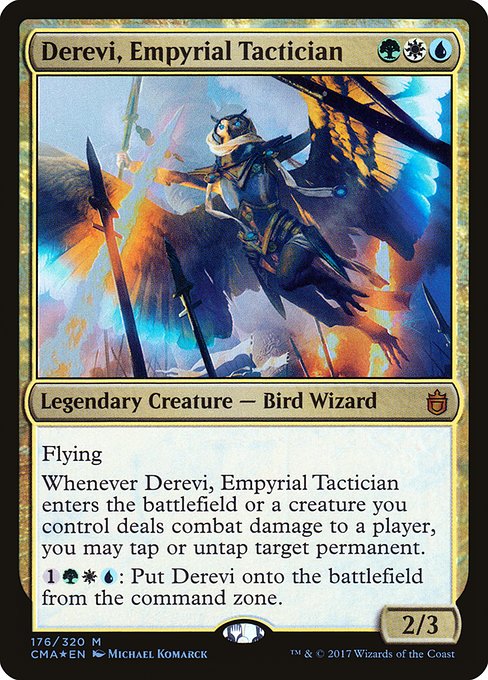Deck & Commander Strategies

Sauron, the Dark Lord
Amass Orc tokens whenever opponents cast spells, build a large army, and utilize sacrifice outlets for card draw and incremental advantage, overwhelming opponents with relentless pressure.

Arcades, the Strategist
Use creatures with Defender, turning their toughness into combat damage, drawing cards for each defender entering the battlefield, and attacking with walls to create a unique and powerful board presence.

Derevi, Empyrial Tactician
Control the game with the Millennium Calendar by accruing time counters to deal massive damage, while using counterspells and board wipes to maintain dominance and stall opponents.

Juri, Master of the Revue
Sacrifice permanents to grow Juri and deal damage on death, leveraging treasures and stolen creatures to execute combos and finish opponents via damage and sacrifice synergies.
Gameplay Insights
- 1
Sauron's ability to amass Orc tokens on opponents' spells allowed for consistent board development and pressure, forcing opponents to respond early or be overwhelmed.
- 2
Arcades' use of defenders as attackers leveraged both card draw and unexpected combat damage, turning a traditionally defensive strategy into a potent offense.
- 3
Derevi's Millennium Calendar created a slow but inevitable damage clock, incentivizing opponents to prioritize removal of the artifact or Derevi herself.
- 4
Juri's synergy with sacrificing permanents and dealing damage upon death made her a continuous threat, especially when combined with stealing opponents' creatures.
- 5
The interaction between Sauron's sacrifice outlets and token generation created a strong engine that fueled both resource advantage and board control.
- 6
Players had to balance aggression with control, as early board wipes and counterspells from Derevi's deck slowed down token swarms but could not stop the mounting pressure.
Notable Cards
-

The One Ring
-

Emry, Lurker of the Loch
-

Zulaport Cutthroat
Gameplay Summary
The game started with players developing their board states and setting up their strategies, showcasing a diverse range of decks with unique win conditions.
Sauron focused on building an army of Orc tokens and leveraging sacrifice outlets to draw cards and maintain board presence.
Arcades utilized a wall-based army that turned defenders into aggressive attackers, drawing cards through creature deployments and dealing damage based on toughness.
Derevi aimed to control the pace using the Millennium Calendar, ramping up time counters to deliver a massive damage burst once fully charged, while also controlling the board with counterspells and board wipes.
Juri centered around sacrificing permanents to grow in power and deal damage upon death, employing treasures and opponent creatures to fuel her sacrifice theme for reach and finishers. As the game progressed, key interactions revolved around Sauron's mass token generation and card draw engines, which allowed for increased board presence and pressure.
Arcades' ability to turn defenders into threats forced opponents to deal with his walls early or face significant damage later.
Derevi's slow but inevitable clock with the Millennium Calendar pushed opponents to consider removal or disruption strategies quickly.
Juri's synergy with sacrifice and damage output created a continuous threat, especially with the potential to fling creatures for lethal damage.
The turning point came when players had to respond to the mounting threats from Sauron's relentless token amass and Arcades’ evasive defenders, while Derevi's calendar neared completion, forcing aggressive plays and strategic sacrifices to disrupt the clock.
Ultimately, the game highlighted the power of sacrifice and token swarm mechanics, with players juggling board control and damage races to secure victory.



























![Juri Aristocrats vs. Light-Paws Auras [Duel Commander-EDH] - Magic: The Gathering thumbnail](https://i.ytimg.com/vi/DALkmfsyCSw/sddefault.jpg)
![Juri Aristocrats vs. Eleven & Will [Duel Commander-EDH] - Magic: The Gathering thumbnail](https://i.ytimg.com/vi/7s_bqTkh8x4/sddefault.jpg)











![Commander VS: Meren vs Kaalia vs Derevi vs Freyalise [Commander Anthology] thumbnail](https://i.ytimg.com/vi/Qx6Xp6fw7sU/sddefault.jpg)
![Commander VS S1E4: Prossh vs Derevi vs Karador vs Scion [MTG Multiplayer] thumbnail](https://i.ytimg.com/vi/qKq_zjLSJU8/sddefault.jpg)





![Commander VS S12E1: Nicol Bolas vs Arcades vs Vaevictis Asmadi vs Chromium [EDH] thumbnail](https://i.ytimg.com/vi/gtfErgL6f9U/sddefault.jpg)




